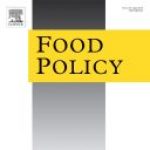Author: Prabhu Pingali

Technological Interventions in Indian Food Systems and the Future of Food Security
Technological Interventions in Indian Food Systems and the Future of Food Security is available for download in PDF format. With India on track to become the world’s most populous country by 2030, agricultural technology will play a vital role in ensuring that the country meets...

Food Systems Transformation in Asia – A Brief Economic History
Abstract Asia’s food systems have undergone rapid economic and socio-cultural transformations in the past 60 years. During the period, almost all the countries in the region eradicated famines and achieved food self-sufficiency and heterogeneous levels of poverty reduction. Food system transformation in Asian countries has...

Aggregation Models and Small Farm Commercialization – A Scoping Review of the Global Literature
Abstract Aggregation models where small farms jointly access credit, inputs, information, and product markets are not new to global agricultural systems. For over a century, agricultural cooperatives worldwide have tried rectifying small farm disadvantages in market access. In the last two decades, newer aggregation models...

Food Loss of Perishable Produce from Farm to Retail: Evidence from Tomato Supply Chains in South India
Abstract Background Reducing food loss and waste (FLW) may narrow gaps between fruit and vegetable production and recommended intake. However, FLW estimates are inconsistent due to varying estimation methods. Objectives Using multiple estimation approaches, we examined the extent and determinants of FLW along tomato supply...

Hunger and Environmental Goals for Asia: Synergies and Trade-offs Among the SDGs
Abstract Rapid progress in hunger reduction in Asia has come at the cost of environmental degradation, while pursuing environmental conservation goals risk slowing further progress on hunger. Operationalizing the Sustainable Development Goals (SDGs) shows us the complexity of achieving multiple societal goals simultaneously. The lack of coordination across...

All Hat and No Cattle: Accountability Following the UN Food Systems Summit
Abstract The United Nations Food Systems Summit (UNFSS) is an important moment to garner political and financial attention to the challenges that food systems face. It is a difficult moment with many competing national and global priorities including massive inequities, rapid climate change and a...

Multiple Risk Factors Contribute to Childhood Stunting in Karnataka, India
Abstract Childhood stunting remains a prominent metric in the health and development of modern India. In Karnataka, India, districts vary substantially in stunting prevalence. Here we take a close look at the nature of childhood stunting in the state: its epidemiology, genetics, biology, nutritional basis,...

Risk Factors in Childhood Stunting in Karnataka, India, Vary by Geography
Abstract Childhood stunting remains a public health concern in India. In Karnataka, the districts vary substantially in stunting prevalence. Using the NFHS-4 and AidData GEO datasets, we tested the hypothesis that ‘wet’ and ‘dry’ districts in Karnataka show different contributions to stunting. We found that...

Transitioning to an Obese India: Demographic and Structural Determinants of the Rapid Rise in Overweight Incidence
Abstract Read a policy brief based on this study. India, which has long suffered from undernutrition, has seen a rapid rise in overweight incidence in the last decade and a half. These changes are characterized by significant within-country differences in overweight incidence that vary by...

Sowing Trouble: The Beginnings of an Alcohol Problem?
On June 2, 2021, the Indian government announced a Production Linked Incentive (PLI) scheme for several key sectors of the economy. Under this scheme, the fuel companies will be required to sell gasoline containing up to 20 percent ethanol by 2023, with the view to reduce dependency on oil imports and lower carbon dioxide emissions in cities. (Ethanol adds extra oxygen to petrol which lowers the emission of harmful gases and is shown to significantly reduce air pollution.) This target implies that India will need 1,000 crore liters of ethanol against the nation’s current capacity of 684 crore liters.

